Baruth, J., Casanova, M., El-Baz, A., Horrell, T., Mathai, G., Sears, L., Sokhadze, E. (2010). Low-frequency repetitive transcranial magnetic stimulation modulates evoked gamma frequency oscillations in autism spectrum disorder. Journal of Neurotherapy, 14(3), 179–194.
Coben, R., Mohammad-Rezazadeh, I., Cannon, R. (2014). Using quantitative and analytic EEG methods in the understanding of connectivity in autism spectrum disorders: a theory of mixed over- and under-connectivity. Frontiers in Human Neuroscience 8:45. doi: 10.3389/fnhum.2014.00045.
Coben, R., & Myers, T. E. (2010). The relative efficacy of connectivity guided and symptom based EEG biofeedback for autistic disorders. Applied Psychophysiology & Biofeedback, 35(1), 13–23.
Coben, R., & Pudolsky, I. (2007). Assessment-guided neurofeedback for autistic spectrum disorder. Journal of Neurotherapy, 11(1), 5–23.
Coben, R. (2007). Connectivity-guided neurofeedback for autistic spectrum disorder. Biofeedback, 35(4), 131–135.
Coben, R. Sherlin, L., Hudspeth, W. J., McKeon, K., & Ricca, R. (2014) Connectivity-Guided EEG Biofeedback for Autism Spectrum Disorder: Evidence of Neurophysiological Changes. Journal of NeuroRegulation, 1(2) 109-130.
Drysdale, M,T,B., Martinez, Y, J., Thompson, L. (2012). The effects of humorous literature on emotion: A pilot project comparing children with asperger’s syndrome before and after neurofeedback training and controls. Journal of Neurofeedback.
Friedrich, E., Sivanathan, A., Lim, T., Suttie, N., Louchart, S., Pillen, S., Pineda, J. (2015). An effective neurofeedback intervention to improve social interactions in children with autism spectrum disorder. Journal of Autism & Developmental Disorders, 45(12), 4084-4100. doi: 10.1007/s10803-015-2523-5
Frye, R., Rossignol, D., Casanova, M., Martin, V., Brown, G., Edelson, S., Coben, R., Lewine, J., Slattery, J., Lau, C., Hardy, P., Fatemi, S., Folsom, T., MacFabe, D., Adams, J. (2013). A review of traditional and novel treatments for seizures in autism spectrum disorder. Findings from a systematic review and expert panel. Public Health 1:31. doi: 10.3389/fpubh.00031
Goodman, M. S., Castro, N., Sloan, M., Sharma, R., Widdowson, M., Herrera, E., Pineda, J. A. (2018). A Neurovisceral Approach to Autism: Targeting Self-Regulation and Core Symptoms Using Neurofeedback and Biofeedback. NeuroRegulation 5(1), 9-29.
Jarusiewicz, G. (2007). Use of neurofeedback with autistic spectrum disorders. Chapter in J. R. Evans (Ed.), Handbook of Neurofeedback. Binghampton, NY: Haworth Medical Press, pp. 321–339.
Jarusiewicz, B. (2002). Efficacy of neurofeedback for children in the autistic spectrum: A pilot study. Journal of Neurotherapy, 6(4), 39–49.
Kessler, K., Seymour, R. A., & Rippon, G. (2016). Brain oscillations and connectivity in autism spectrum disorders (ASD): new approaches to methodology, measurement and modelling. Neuroscience and Biobehavioral Reviews, 71, 601–620. https://doi.org/10.1016/j.neubiorev.2016.10.002
Knezevic, B., Thompson, L., & Thompson, M. (2010). Pilot project to ascertain the utility of Tower of London Test to assess outcomes of neurofeedback in clients with Asperger’s Syndrome. Journal of Neurotherapy, 14(3), 3–19.
Kouijzer, M. E. UJ., de Moor, J. M. H., Gerrits, B. J. L., Buitelaar, J. K., & van Schie, H. T. (2009). Long-term effects of neurofeedback treatment in autism. Research in Autism Spectrum Disorders, 3(2), 496–501.
Pineda J. A., Brang D, Hecht E, Edwards L, Carey S, Bacon M, Futagaki C, Suk D, Tom J, Birnbaum C, Rork A.(2008). Positive behavioral and electrophysiological changes following neurofeedback training in children with autism. Research in Autism Spectrum Disorders, 2, 557–581.
Scolnick, B. (2005). Effects of electroencephalogram biofeedback with Asperger’s syndrome. International Journal of Rehabilitation Research, 28(2), 159–163.
Sichel, A. G., Fehmi, L. G., & Goldstein, D. M. (1995). Positive outcome with neurofeedback treatment of a case of mild autism. Journal of Neurotherapy, 1(1), 6064.
Sokhadze, E., Baruth, J., El-Baz, A., Horrell, T., Sokhadze, G., Carroll, T., Tasman, A., Sears, L., Casanova, M. (2010). Impaired error monitoring and correction function in Autism. Journal of Neurotherapy, 14(2), 79–95.
Sokhadze, E. M., Casanova, M. F., El-Baz, A. S., Farag, H. E., Li, X. & Wang, Y. (2016). TMS-based Neuromodulation of Evoked and Induced Gamma Oscillations and Event-related Potentials in Children with Autism. NeuroRegulation, 3.(3), 101-126.
Sokhadze, G., Casanova, M. F., Kelly, D., Casanova, E., Russell, B., Sokhadze E. M. (2017). Neuromodulation based on rTMS affects behavioral measures and autonomic nervous system activity in children with autism. NeuroRegulation 4(2), 65-78.
Sokhadze, E., El-Baz, A., Tasman, A., Sears, L., Wang, Y., Lamina, E., Casanova, M. (2014). Neuromodulation integrating rTMS and neurofeedback for the treatment of autism spectrum disorder: an exploratory study. Applied Psychophysiology & Biofeedback, 39(3-4), 237-257. doi: 10.1007/s10484-014-9264-7
Steiner, N., Frenette, E., Hynes, C., Pisarik, E., Tomasetti, K., Perrin, E., Rene, K. (2014). A pilot feasibility study of neurofeedback for children with autism. Applied Psychophysiology & Biofeedback, 39(2), 99-107. doi: 10.1007/s10484-014-9241-1
Thompson, M., Thompson, L., & Reid, A. (2010). Functional Neuroanatomy and the Rationale for Using EEG Biofeedback for Clients with Asperger’s Syndrome. Journal of Applied Psychophysiology and Biofeedback, 35(1), 39-61.
Wang, Y., Sokhadze, E. M., El-Baz, A. S., Li, X., Sears, L., Casanova, M. F., Tasman, A. (2015). Relative power of specific EEG bands and their ratios during neurofeedback training in children with Autism Spectrum Disorder. Frontiers in Human Neuroscience, 9, 723.

